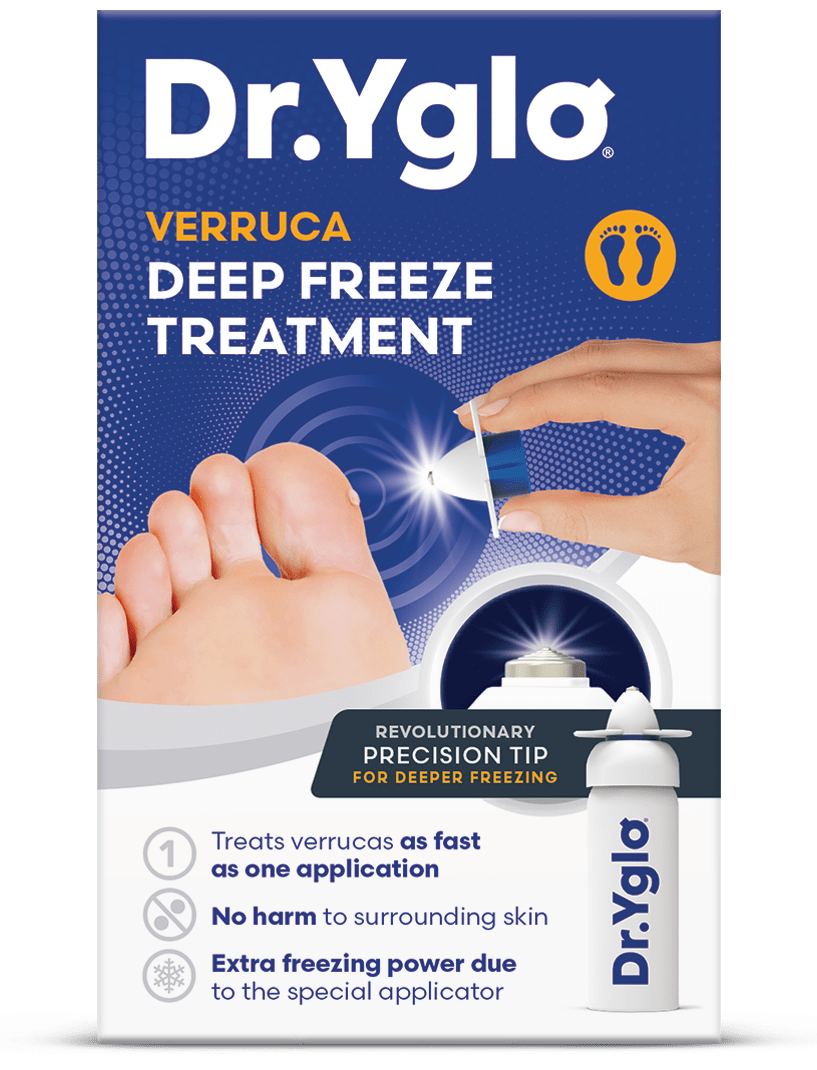
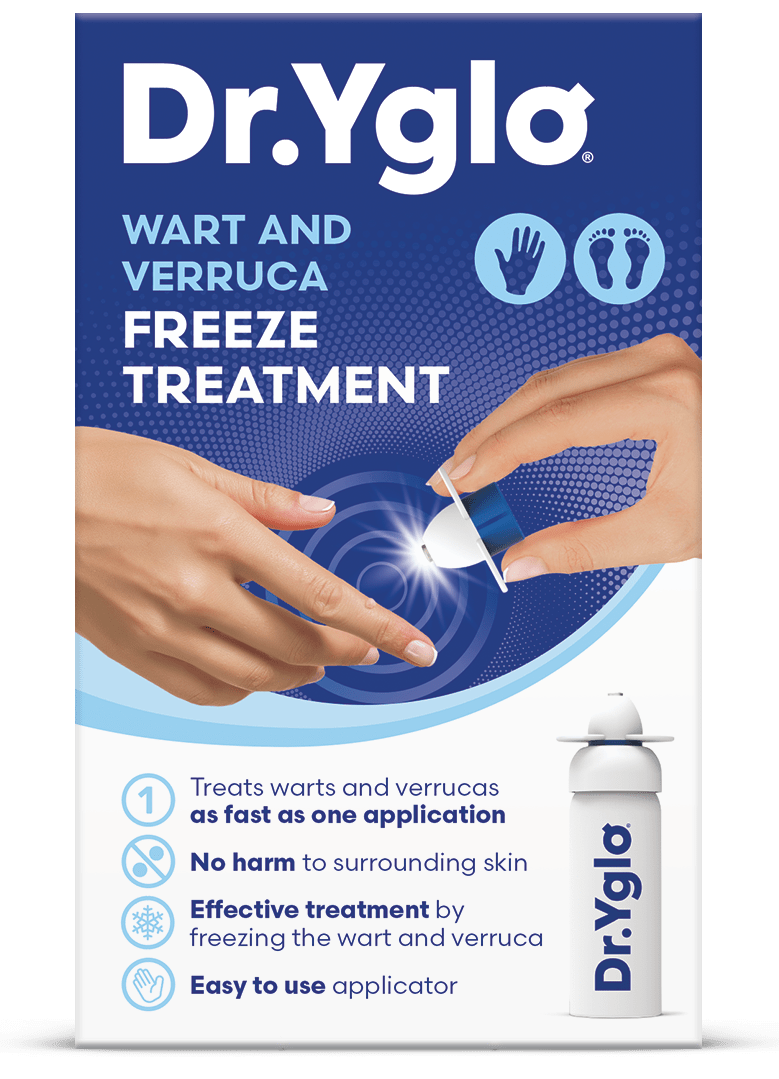
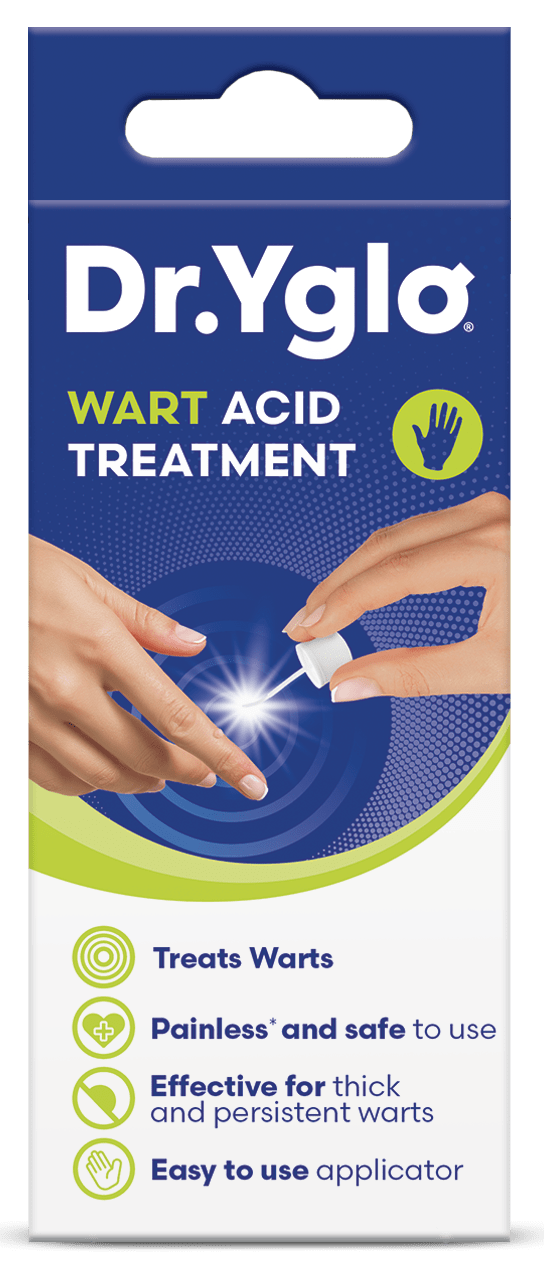
Say goodbye to unsightly and uncomfortable warts and verrucas
We understand that warts can be uncomfortable, painful and unsightly.
The good news is that warts are usually harmless. You can safely and
effectively treat warts at home and Dr. Yglo is here to help!
Our easy-to-use treatments will help you get rid of warts and verrucas
fast, safely and effectively. So you can enjoy healthy and visibly clear skin!

What solution would you like?
Treatment for
warts and verrucas
DR. YGLO
WART AND VERRUCA
FREEZE TREATMENT
Dr. Yglo Wart and Verruca Freeze Treatment provides an easy-to-use freeze treatment for warts and verrucas which is based on highly effective cryotherapy used by doctors.
This treatment utilizes a patented technology that is both fast-acting and proven to effectively eliminate warts and verrucas.
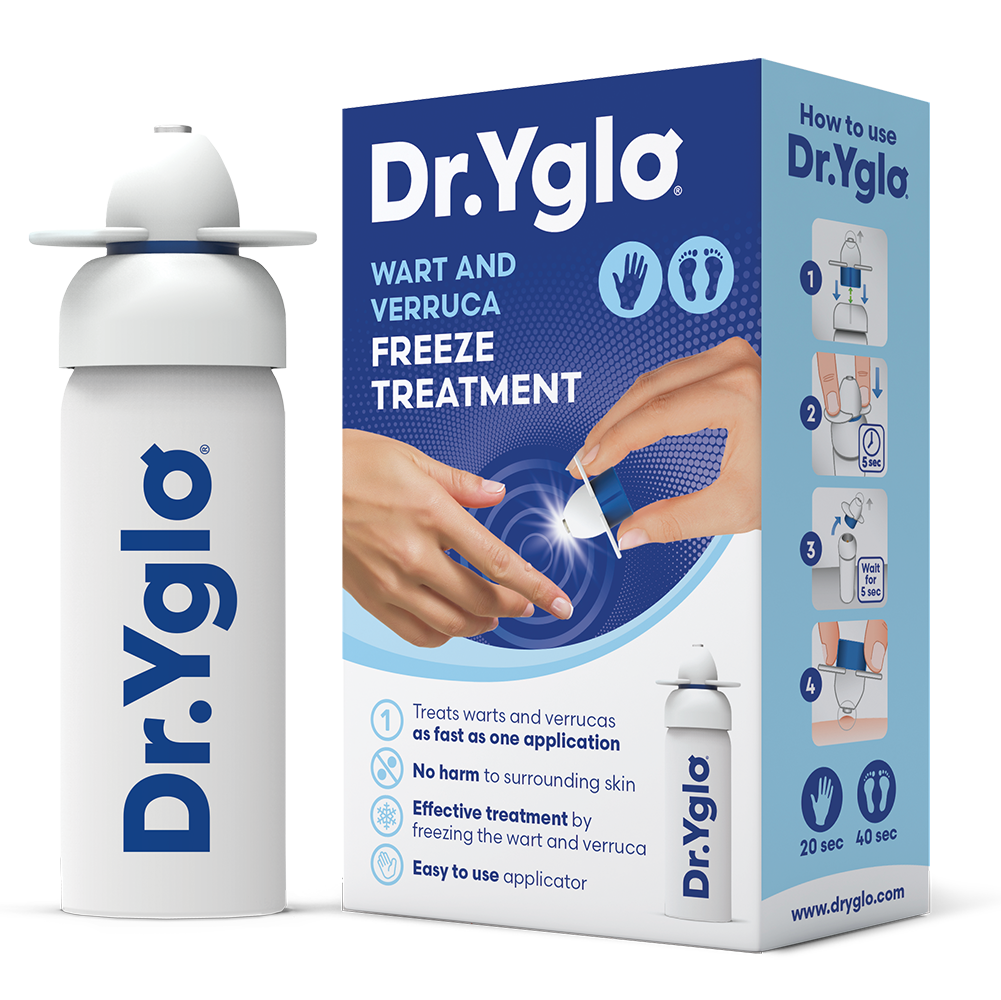
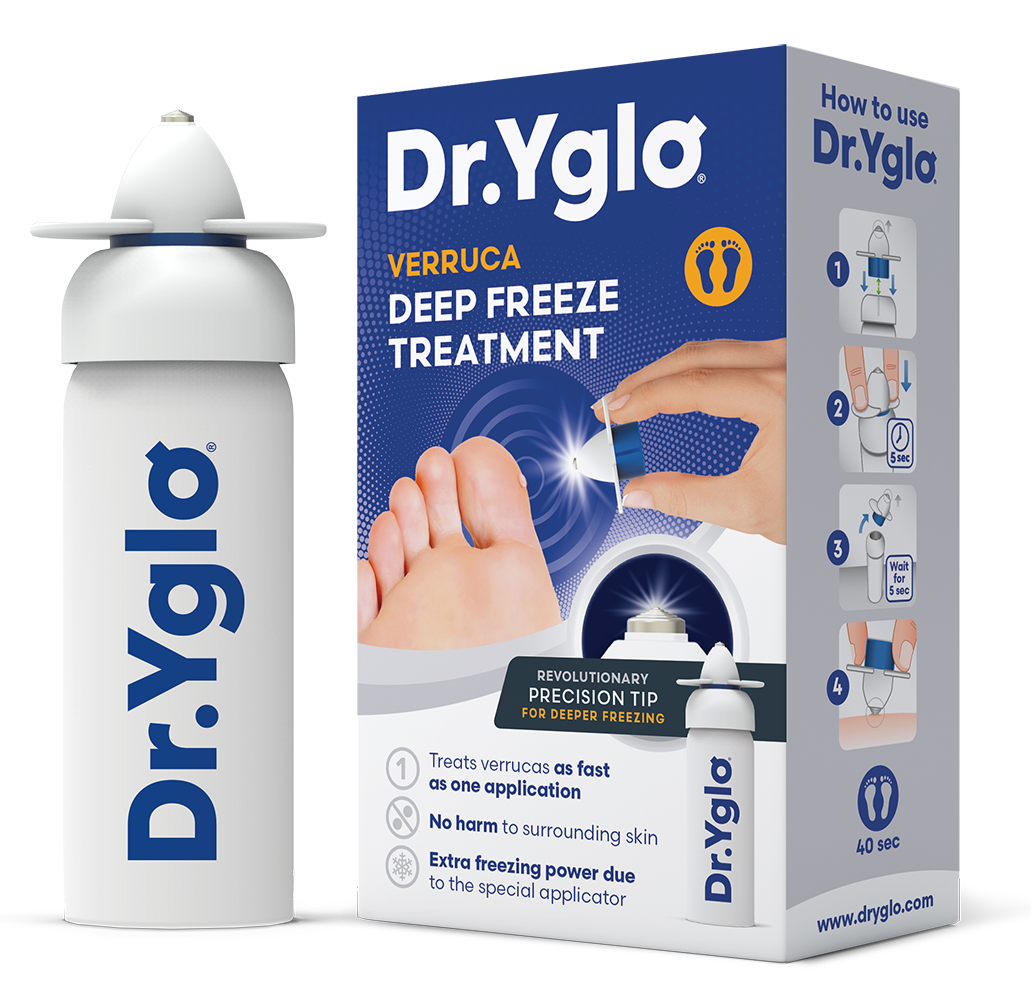
Treatment for
verrucas
DR. YGLO
VERRUCA
DEEP FREEZE TREATMENT
Discover the incredible effectiveness of Dr. Yglo Verruca Deep Freeze Treatment. Verrucas are warts that appear on the sole of the foot. Treating them can be a bit trickier because the thickened skin on the soles makes it more challenging for wart treatments to penetrate and effectively eliminate the virus.
That’s why Dr. Yglo Verruca Deep Freeze Treatment comes with a revolutionary pointed precision tip. This specially designed tip allows for deep penetration into the skin, ensuring a thorough freezing process that effectively targets and eliminates verrucas that are growing internally.
Treatment for
warts
DR. YGLO
WART
ACID TREATMENT
Dr. Yglo Wart Acid Treatment is a powerful and easy-to-use acid treatment for warts.
It contains the active ingredient Monochloroacetic Acid (MCA) that is fast-acting and clinically proven to be an effective treatment to get rid of warts and verrucas. This makes it an effective alternative to our freeze treatment.
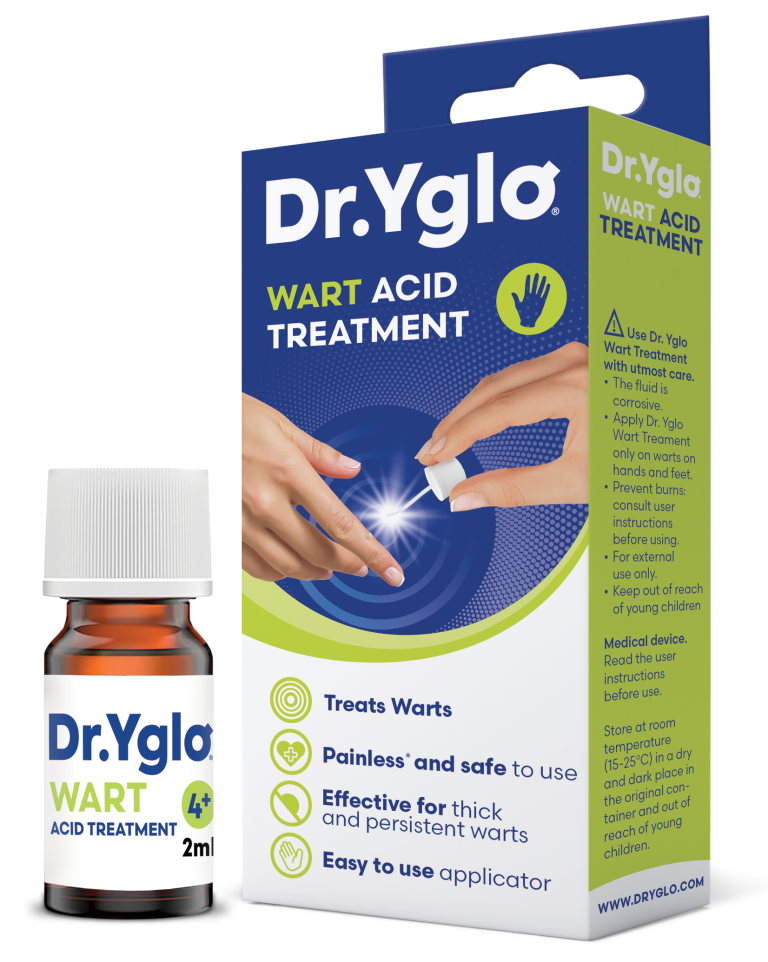
Quick and Easy to Use
Our easy-to-use and fast acting treatments can be used in the comfort of your home and will get you wart free skin in no-time.
Safe Solutions
You can safely treat warts and verrucas with our range of products without damaging surrounding skin.
Highly Effective
Whether you choose our cryotherapy-based freeze treatment or our strong acid treatment, both options are highly effective for treating warts and verrucas.
We’ve got you wart free.
Life is just too short to worry about warts!
We’ll be happy to help you on your way to healthy, clear skin by offering reliable and innovative solutions to get rid of warts and verrucas. So you can feel comfortable and confident.
Curious what our customers say about Dr. Yglo?
Highly effective and easy to use!
This is great and easy to use. This product worked fast and has made a really significant difference on the wart. I would definitely recommend it.
– Angela
Efficient wart remover
My daughter has gotten two warts on her feet. This will be great to remove warts at home with one application.
– Rebecca
Very easy to use applicator
My wart fell off in less than a week. Strong freeze technology. Highly recommended.
– David
Check out our
Dr. Yglo Wart and Verruca
Freeze Treatment video
Dr. Yglo Wart and Verruca Freeze Treatment is a safe and easy-to-use treatment that you can conveniently use in the comfort of your own home.
What’s up with warts?
All you need to know
about warts and
verrucas
Read our blog to discover everything you need to know about warts and verrucas and get answers to your most pressing questions about how warts and verrucas form and how to treat them.
Where to buy Dr. Yglo?
Please visit the website of your country to check for product availability.

What solution would you like?
Whether you are looking for an acid or freezing method, Dr. Yglo can help you out with effective wart treatments. Find out which method is right for you!